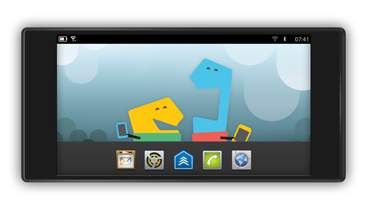Intel’s x86 chips may power the majority of the world’s PCs, but Santa Clara says it is now ready to “fine-tune” its processor supply chain to target the tablet and smartphone space.
Both lucrative markets are currently dominated by ARM-powered chips manufactured by companies like Apple, Nvidia, Qualcomm and Texas Instruments.

“We will start to see more and more of our capacity and our output go to things that are mobile, like phones and tablets and other devices,” Brian Krzanich, Intel’s newly appointed COO told Reuters.
“What have I [personally] brought to manufacturing? Speed and agility… That’s exactly what the PC business and exactly what the phone business will need.”
However, Santa Clara will undoubtedly face a rather steep uphill climb when it comes to gaining a legitimate foothold in the hyper-competitive smartphone and tablet markets. Indeed, Intel’s Medfield received positive reviews from a number of analysts, but is viewed by most of the industry as little more than a first step towards a brave new mobile future.
“After 4 years, 3 process technologies and 3 different designs, Intel finally has a product with power consumption that is appropriate for smart phones,” prominent Silicon Valley analyst David Kanter wrote in a recent analysis published on RealWorldTech.
“[And] judging by Intel’s plans for 14nm SoCs based on the Airmont CPU core in 2014, this process technology advantage is only likely to grow over time… [Of course], whether that advantage will yield a significant smart phone market share for Intel is uncertain, but Medfield clearly demonstrates that it is possible.”
SemiAccurate’s Charlie Demerjian expressed similar sentiments.
“[Medfield] has the software support at launch to do what is necessary, and as long as Intel keeps shoveling money at software, things will stay that way. In the end, the crystal ball says that Intel still has a chance, but it is a steep uphill climb,” he explained.
“[Yes], the check boxes are all ticked, and things look positive for launch. [True], the last three attempts to get Atom in to phones were an unmitigated disaster, but things really are different this time. Intel can do well with Medfield and will have some solid products on the market shortly.”
Intel has confirmed that its x86-powered smartphones will soon be hitting a number of markets, including the UK, France, China and India. Although a handset for the US has yet to be announced, 2013 will undoubtedly see a slew of Intel-based Windows 8 tablets that could eke out serious market share.






